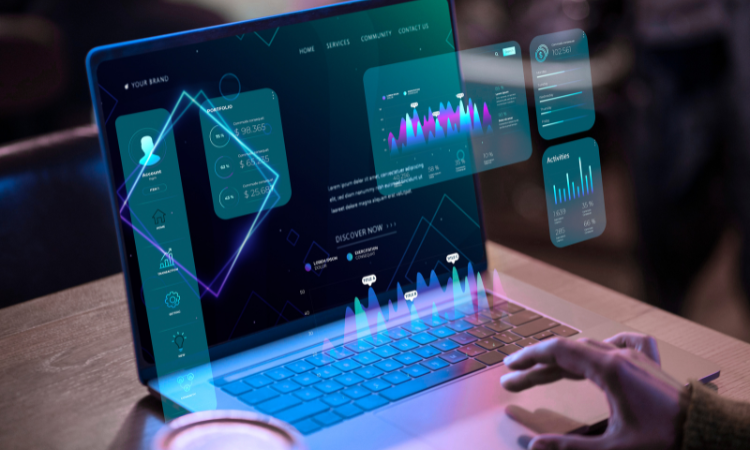Customer feedback isn’t trickling in—it’s coming at you from every direction. Surveys, support tickets, chat logs, social media comments, app store reviews... it’s nonstop. You’re likely already collecting this data, maybe even running sentiment analysis or tagging responses.
But let’s be honest—are those insights actually turning into action fast enough?
That’s the real challenge with traditional Voice of Customer programs. You know how your customers feel, but by the time your team sifts through the noise, escalates issues, and aligns responses across teams, the moment to fix it has passed. Frustrated customers move on. Opportunities to improve customer satisfaction slip through the cracks.
This is exactly where agentic AI in VoC programs flips the script.
Unlike traditional artificial intelligence systems or generative AI tools that require prompts or rules, agentic AI operates with autonomy. These AI agents are designed to perceive feedback signals, reason through patterns, make decisions, and act with minimal human intervention. Whether that means routing high-priority feedback, launching recovery workflows, or alerting teams to emerging risks, agentic AI systems don’t just analyze, they execute.
The difference? Speed, scale, and intelligence. What used to take weeks of manual tagging, routing, and follow-up, agentic AI technologies can now resolve in minutes improving CSAT, reducing churn, and freeing up your teams to focus on strategic decision-making.
In this blog, we explore 10 real-world use cases of agentic AI that demonstrate how leveraging AI doesn’t just support VoC programs, it transforms them into high-speed, high-impact engines for continuous improvement. So, let's get started!
TL;DR
- Traditional VoC programs collect feedback but fail to act fast enough, leaving insights buried in dashboards and customers waiting.
- Agentic AI changes this by analyzing signals in real time, making decisions autonomously, and executing next steps without delays or bias.
- It powers practical capabilities—automated detractor recovery, smart escalation and routing, dynamic survey optimization, root-cause analysis, and proactive churn prevention.
- The result is tangible: faster response times, higher retention, more accurate product decisions, and measurable gains in customer satisfaction.
- Zonka Feedback brings these agentic AI capabilities into your VoC program—turning feedback into action, automating routine tasks, and giving your teams the bandwidth to focus on strategy. Schedule a demo to see how it works for your business.
Ready to Transform VoC Program with the power of Agentic AI?
Unlock real-time insights and turn customer feedback into proactive CX intelligence with Zonka Feedback today

Understanding Agentic AI in VoC Programs
Most VoC programs today collect feedback, categorize it, maybe even visualize it—but the real bottleneck happens after that. Insights pile up, action stalls, and your team gets buried in repetitive tasks. Sound familiar?
That’s because most systems still rely on either traditional automation or generative AI. They’re useful but limited. Traditional automation follows rules. It’s great at tagging, sorting, and routing based on keywords or scores. But it can’t think. Generative AI tools can write human-like responses or summarize feedback. Impressive—but they still wait for a prompt. They don’t act on their own.
Agentic AI changes everything. So, what exactly is Agentic AI?
Agentic AI refers to a new wave of AI systems that don’t just analyze—they act. These systems use AI agents—goal-driven units that perceive, reason, decide, and execute tasks with minimal human intervention. Think of them less like bots, and more like autonomous team members embedded in your VoC stack.
They’re not just “smart assistants.” They have agency—the ability to pursue specific goals, adapt to context, and take initiative. As Constellation Research analyst Liz Miller puts it:
Agentic AI transforms VoC programs from data centers to decision engines.
Where traditional tools stop at dashboards and generative AI stops at suggestions, agentic AI systems take action: triggering workflows, sending alerts, escalating issues, launching recovery journeys—without waiting for a human to step in.
Agentic AI vs Traditional Automation vs Generative AI
Let’s break it down simply:
| Capability | Traditional Automation | Generative AI | Agentic AI |
| Follows rules | ✔️ | ❌ | ✔️ |
| Creates content | ❌ | ✔️ | ✔️ |
| Understands context | ❌ | ✔️ | ✔️ |
| Takes independent action | ❌ | ❌ | ✔️ |
| Learns from outcomes | ❌ | ✔️ | ✔️ |
You can think of it as the evolution of AI in business:
- Automation saves time
- Generative AI improves communication
- Agentic AI closes the loop
What makes Agentic AI so powerful in VoC programs?
Agentic AI in VoC programs is built on a four-step intelligence loop:
- Perceive — Ingests multichannel feedback: surveys, reviews, tickets, chat logs, social media comments
- Reason — Assesses urgency, emotional tone, customer history, and business impact
- Act — Triggers personalized workflows: routes issues, alerts teams, launches follow-ups
- Learn — Refines its actions based on outcomes, so it gets better over time
These AI agents operate in real-time, often completing tasks that would take human agents hours—or never get done at all. And because they're trained on natural language processing (NLP) and machine learning, they can interpret nuance, detect patterns, and spot early churn risks before they show up on a dashboard. According to Accenture, businesses using AI agents to automate frontline operations report up to 50% faster resolution times and 30% higher customer satisfaction scores.
10 Practical Use Cases of Agentic AI in Voice of Customer (VoC) Programs
Let us directly jump into the use cases of Agentic AI in VoC programs that can help you transform customer feedback into actionable strategies and measurable business outcomes.
1. Automated Detractor Recovery (NPS/CSAT)
When a customer gives a low NPS or CSAT score, every minute counts. The longer it takes to respond, the more likely it is that disappointment turns into churn—and that competitor tabs are already open.
The problem? Manual follow-up workflows are too slow. Teams need time to read the feedback, prioritize the case, coordinate a response, and decide who should reach out. By the time someone acts, the damage is often done.
Agentic AI steps in as a real-time recovery engine. It doesn’t just flag the low score—it understands why it happened, decides the next best action, and executes the response instantly.
Here’s how it works:
- Understands context, not just scores: It uses natural language processing to decode the emotion, urgency, and root cause behind negative feedback—not just the number.
- Personalizes the recovery journey: Based on customer history, sentiment, and impact, it tailors outreach—be it an apology, a support escalation, or a custom incentive.
- Acts across channels: From triggering emails or in-app messages to alerting your support team or even auto-calling the customer—it chooses the right path, fast.
- Learns what works: It tracks which actions convert detractors into neutrals or promoters—and refines its strategy in real time.
Why it matters: Organizations that implement agentic AI for detractor recovery report a faster response times and higher success rates in converting detractors to promoters. The faster you respond with empathy and action, the more likely you are to retain trust and loyalty. Agentic AI doesn’t replace your support team—it gives them a head start, ensuring no critical feedback sits idle while customers silently churn.
2. Real-Time Escalation & Smart Routing
Nothing frustrates a customer more than being bounced from one team to another—especially when they’re already upset. Every “please hold while I transfer you” chips away at trust, no matter how helpful your team is in the end. The root of the problem? Traditional routing systems rely on simplistic logic—keywords, menu selections, or static rules that ignore the real-world context of the issue.
Agentic AI rewrites the playbook with contextual, intelligent routing. It doesn’t just route by topic. It analyzes sentiment, urgency, complexity, and even your business priorities to decide where each issue truly belongs—before it reaches a live agent.
Here’s how it works:
- Understands emotional tone and urgency: By analyzing language and tone, it flags emotionally charged or time-sensitive feedback for immediate attention.
- Factors in customer value and history: High-value customers or those with past unresolved issues are automatically escalated with context.
- Matches issues to the right team: It considers the technical complexity, required expertise, agent availability, and even SLA tiers when making a routing decision.
- Prepares agents before the handoff: Teams receive pre-contextualized summaries so customers aren’t forced to repeat themselves.
Why it matters: Poor routing creates negative experiences that influence overall satisfaction scores. When customers have to repeat their problems multiple times, even eventual resolution feels inadequate.
3. Dynamic Survey & In-App Prompt Optimization
Static surveys deliver limited insights and suffer from low completion rates. Most customers abandon lengthy questionnaires or provide superficial responses to generic questions. Agentic AI creates adaptive survey experiences:
- Contextual timing: Presents in-app surveys at the most relevant moments based on user behavior, app usage patterns, or lifecycle stage
- Question sequencing: Adjusts follow-up questions dynamically based on previous answers to gather deeper, more contextual user feedback
- Format optimization: Selects question types (rating scales, open text, multiple choice) optimized for the user’s device and past preferences
- Length adjustment: Shortens or expands surveys based on real-time engagement signals and the perceived value of each response
Why it matters: Generic surveys waste customers' time and provide limited value. Adaptive questioning shows respect for customers' time while gathering meaningful feedback that actually drives improvements.
4. Feature Request Triage & Roadmap Scoring
Product teams often find themselves swamped with feature requests coming from all directions—support tickets, NPS surveys, sales calls, user interviews, and online communities. The result? Prioritization by whoever shouts the loudest, not by what truly matters to your users.
Agentic AI fixes this by turning scattered feedback into structured product intelligence:
- Aggregates multichannel input: Gathers feature requests from across your VoC ecosystem, including surveys, CRM logs, support tickets, and even transcripts
- Unifies similar needs: Detects recurring themes even when customers phrase them differently (e.g., “offline mode” vs “works without internet”)
- Scores business impact: Weighs each request based on how many users it affects, potential revenue influence, and competitive edge
- Estimates ROI: Predicts development effort to help product teams make high-impact, low-effort wins visible
Why it matters: When roadmap decisions rely on gut feel or VIP opinions, it’s easy to overlook the features that truly drive growth and retention. Agentic AI ensures your product team builds what matters—at the right time.
5. Root-Cause Analysis for KPI Swings
When key performance indicators like NPS, CSAT, or contact volume suddenly shift, finding the “why” often means sifting through endless customer conversations, ticket logs, and behavioral data. This manual process not only delays resolution—it compounds customer dissatisfaction and weakens your VoC program’s responsiveness.
Agentic AI flips the script by enabling real-time, autonomous investigation:
- Real-time KPI monitoring: Continuously watches CSAT, NPS, and support volume for abnormal shifts and trend breaks
- Feedback correlation across channels: Links quantitative changes with unstructured feedback from surveys, chat logs, reviews, and social media
- Customer journey mapping: Pinpoints journey breakpoints where negative feedback clusters, from onboarding drop-offs to delayed resolutions
- Automated hypothesis testing: Uses pattern recognition and predictive modeling to validate likely causes without manual deep dives
Why it matters: Acting fast when KPIs nosedive can save revenue, reduce churn, and boost customer satisfaction. With AI technologies doing the heavy lifting, your team can focus on applying solutions—not chasing symptoms.
6. Proactive Churn Risk & Save Plays
Most churn prevention efforts kick in after the damage is done—when a cancellation request has already hit the system. At that point, you’re negotiating loss, not building loyalty. What if your VoC program could step in earlier?
Agentic AI transforms churn prevention from reactive firefighting into proactive customer retention:
- Behavioral monitoring: Tracks subtle shifts in product usage patterns, flagging declines before they escalate
- Natural language sentiment analysis: Detects dissatisfaction in customer conversations, including social media comments and support chats
- Predictive modeling: Uses machine learning to compare engagement signals against profiles of previously churned users
- External signal scanning: Monitors factors like pricing changes, competitor launches, or industry shifts
Once risk is detected, AI executes tasks autonomously through tailored "save plays":
- Educational nudges to address usage gaps
- Personalized retention offers and loyalty rewards
- Feature suggestions that match customer needs
- Human outreach from customer success for high-value accounts
Why it matters: Don’t wait for exits—act during the relationship’s turning point. Agentic AI enables early, meaningful intervention that boosts customer satisfaction and protects revenue.
7. Review & App Store Mining with Response Orchestration
Public reviews influence more than just reputation—they directly shape customer decisions and conversion rates. Yet most businesses lack the capacity to sift through thousands of reviews across platforms like G2, Google, and app stores. That’s where Agentic AI systems step in to do the heavy lifting. Here’s how it works:
- Comprehensive monitoring: Tracks feedback across dozens of review sites, including app stores and niche platforms
- Sentiment and topic analysis: Uses natural language processing (NLP) to categorize reviews by emotion, keywords, and relevance
- High-impact prioritization: Flags reviews with high visibility, trending issues, or risk to customer satisfaction
- Tailored responses at scale: Generates thoughtful, human-like replies without sounding templated
- Smart routing: Sends critical issues to internal teams for human intervention or deeper resolution
Why it matters: Ignoring public reviews can cost you trust, traffic, and revenue. Responding with care—at scale—shows customers and prospects that you're listening, learning, and acting.
8. Knowledge Base & Macro Auto-Improvement
Support content doesn’t age well. As your product evolves, knowledge base articles and support macros often fall out of sync—leading to customer confusion, repeated questions, and longer resolution times. Manually updating these resources is a time-consuming task most teams struggle to prioritize.
Agentic AI systems help support content keep pace by:
- Identifying knowledge gaps: Surfaces trending customer queries and missed intents not covered by current documentation
- Detecting outdated entries: Flags content that no longer aligns with product capabilities, pricing, or policies
- Reorganizing content intelligently: Uses behavioral data and natural language processing (NLP) to optimize structure for better discoverability
- Auto-suggesting macro improvements: Continuously refines pre-written responses to match customer behavior and sentiment trends
- Tracking content performance: Measures impact on resolution times, deflection rates, and customer satisfaction
Why it matters: Outdated help content is more than just annoying, it erodes trust and efficiency. Leveraging AI technologies to keep your support docs fresh reduces agent load, cuts routine tasks, and delivers faster answers your customers actually want.
9. Closed-Loop Gap Detection & SLA Enforcement
You’ve promised the customer a follow-up within 24 hours—but no one noticed the clock ticking. The result? Broken trust, lower customer satisfaction, and poor compliance with service-level agreements (SLAs).
Agentic AI systems now close this loop, literally and figuratively, by keeping every commitment in check:
- Tracks promises at scale: Monitors follow-up guarantees across customer conversations, tickets, and macros
- Audits SLA compliance: Flags when timelines are missed and prompts automatic escalations
- Initiates fallback workflows: If human agents miss deadlines, the system triggers alerts, sends interim updates, or reassigns tasks
- Learns from outcomes: Uses machine learning to refine internal handoff timing and accountability
Why it matters: Gaps in follow-up aren’t just procedural slip-ups—they damage relationships. By leveraging AI to enforce promises, you ensure your team follows through, even when volume peaks or tasks fall through the cracks.
10. Post-Release Feedback Mapping & Feature Validation
Launching a new feature? The real test starts after the rollout—when customers begin to use (or ignore) what you built. But without precise mapping, it’s hard to know if it’s a hit, a miss, or something in between.
Here’s where Agentic AI steps in to validate roadmap bets:
- Aggregates post-release feedback: Analyzes surveys, social media comments, and in-app responses in real time
- Correlates sentiment and behavior: Links customer behavior data with usage patterns and feature adoption
- Identifies segment-specific reactions: Breaks down feedback by persona, account size, or lifecycle stage
- Provides decision-ready insights: Surfaces which features increased customer engagement and which need rework
Why it matters: You can't improve what you can't measure. Implementing AI here helps you course-correct faster, boost adoption, and double down on features that truly move the needle for your customers.
How Zonka Feedback Helps You Bring Agentic AI into VoC?
Most VoC platforms stop at dashboards. Zonka Feedback goes further with agentic AI that turns feedback into actions—so you’re not chasing tickets or exporting spreadsheets. Here’s how it plugs into your day-to-day and lifts customer satisfaction without adding more routine tasks for your team.
- Automate detractor recovery (NPS/CSAT/CES): Instantly detects low scores + negative customer conversations, drafts recovery messages, and opens tasks with SLAs. High-risk accounts route to human agents automatically when human intervention makes more sense.
- Intelligent escalation & smart routing: Uses natural language processing (NLP) and machine learning to read intent, urgency, and topic—then sends issues to the right owner (not just the right queue). Less ping-pong, faster resolutions.
- Dynamic survey & in-app prompt optimization: AI systems adjust question paths, timing, and length based on behavior—so you collect more contextual insight with fewer drop-offs. Great for boosting response quality and customer engagement.
- Feature request triage & roadmap scoring: Consolidates requests from surveys, tickets, calls, and social media comments; de-dupes similar asks; and scores impact vs. effort using transparent AI models. Better decision making, fewer “loudest voice wins” moments.
- Root-cause analysis for KPI swings: When CSAT, NPS, or contact volume moves, Zonka correlates themes to releases, channels, or policy changes and surfaces actionable insights—so you fix causes, not symptoms.
- Proactive churn risk & save plays: Flags early risk using usage signals + sentiment, then executes tasks: enablement nudges, loyalty offers, or CSM outreach. You act before the cancellation email appears.
- Review & app-store response orchestration: Monitors G2, Play/App Store, and niche sites; prioritizes high-impact reviews; drafts thoughtful replies; and routes product issues internally. Public responsiveness = private wins.
- Knowledge base & macro auto-improvement: Spots repetitive tasks and missing answers, proposes article and macro updates, and tracks deflection. Fewer escalations, faster self-serve.
- Closed-loop gap detection & SLA enforcement: Promises like “we’ll reply in 24 hours” don’t get lost. The system reminds owners, escalates breaches, and updates customers—so your close-the-loop is actually closed.
- Post-release feedback mapping & validation: Ties sentiment and usage to new features, by segment. Double down on what lands, fix what doesn’t. This is leveraging AI where it matters: real roadmap decisions.
That being said, you keep control, Zonka’s agentic workflows run under your policies and approvals—while ai technologies handle the time consuming tasks. The payoff is faster cycles, lower operational costs, and sustained gains in customer experience without hiring more heads.
This is exactly where agentic AI in customer experience proves valuable: it ensures automation works within your governance, enhances efficiency, and frees human teams to focus on strategy, empathy, and high-value interactions.
Conclusion
Agentic AI is no longer a “future trend”—it’s already reshaping how modern Voice of Customer programs work. The difference lies in action. Instead of collecting feedback and hoping someone acts on it, AI systems can now analyze, decide, and execute solutions in real time. That shift turns VoC from a passive reporting function into a proactive growth engine that improves customer satisfaction, protects revenue, and helps you stay ahead of competitors.
For you, the opportunity is clear: stop chasing dashboards and start leveraging AI to create VoC programs that respond at the speed of your customers. From automated detractor recovery and proactive churn prevention to smarter surveys and post-release validation, the use cases we explored show how agentic AI enables you to deliver consistent, scalable, and measurable impact.
And this is just the beginning. As AI models mature and machine learning techniques advance, VoC programs will only become more intelligent, autonomous, and embedded into everyday business operations. The question isn’t whether to adopt—it's how fast you can implement.
With Zonka Feedback’s agentic AI for VoC, you can turn feedback into fast, meaningful action without piling more on your team’s plate. From real-time detractor recovery to smart routing and roadmap validation, Zonka's AI helps you deliver better experiences while keeping control of strategy and outcomes.
Ready to see it in action? Schedule a demo today and see how agentic AI can transform your customer feedback into a competitive edge for your business.











